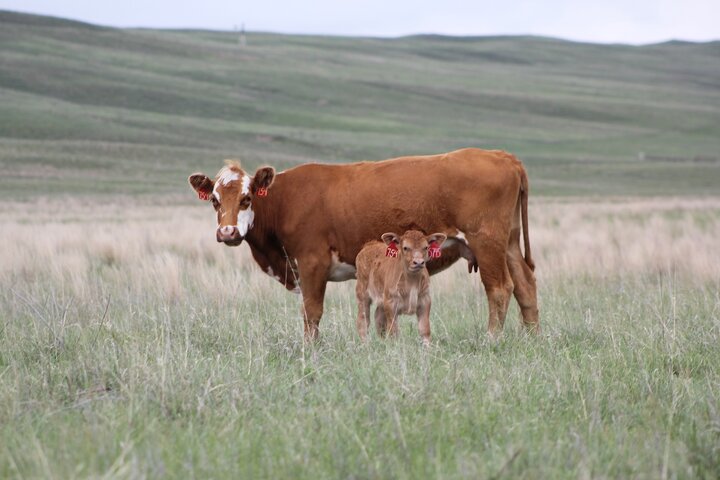As we progress into summer, forage quality can rapidly change depending on factors like rainfall, temperature, etc. A good example of the dynamic interaction of rainfall and forage quality is shown in Table 1. In the Sandhills, 2002 and 2018 were drastically different in total precipitation; however, forage quality driven by forage growth and maturity in terms of crude protein were very similar in a drought or wet rainfall year. Understanding these relationships is important in making proactive management decisions. These changes in forage quality can have a negative or positive impact on animal performance due to an increase or decrease in forage and nutrient intakes.
Forage quality is typically determined from crude protein (CP) and total digestible nutrients (TDN). As forage matures, CP content and rate of digestion declines; therefore, causing the cow to derive fewer nutrients from the forage, thus, lowering the quality. Generally, throughout the grazing season, we see forage nutritive quality decline with our cool-season grasses maturing early in the summer grazing season and then our warm season grasses maturing later in the grazing season. Table 1 shows how level of precipitation during the growing season can impact forage quality during the year. In drought years, crude protein early in the growing season is like average rainfall years; however, due to the lack of moisture, forage quality rapidly declines and forage quality in July is at a quality that you would expect in the fall. On the other hand, in wet rainfall years, forage quality is lower quality than an average rainfall year and to some degree lower than a drought year. This is due to high growth rates of forages and early maturing causing the decrease in forage quality.
| Date | Average | 2002 (Drought) | 2018 (Wet) |
|---|---|---|---|
| 7-Jun | 12.3 | 12.7 | 10.4 |
| 16-Jul | 11.0 | 8.2 | 7.5 |
| 5-Sep | 8.6 | 7.5 | 6.2 |
| 15-Oct | 6.7 | 5.9 | 6.2 |
As forage quality increases, the amount of forage cattle consume also increases and vice versa when we see quality decrease. Thus, animal performance can depend on intake of the forage. Therefore, understanding nutrient requirements and forage quality dynamics is very important to maintain production goals. If we are in drought conditions or high rainfall conditions with decreased forage quality, production responses may decrease due to the decreased nutrient intake and/or decreased forage intake (ie., inability to consume enough forage to meet requirements). Because of the environmental challenges and dynamic changes in forage quality, a good supplementation plan may be needed to meet performance goals. If forage quality is low and not meeting requirements, then supplementing cattle with a high protein supplement will be an effective way to increase forage digestibility and intake.
To learn more about how to improve cow performance while consuming low-quality forages see: https://beef.unl.edu/beefwatch/tips-improve-cow-performance-while-consuming-low-quality-forages.
General “rules of thumb” to help estimate daily feed intake of cows on a dry matter basis consuming forage:
- When forage quality is low (52% TDN or less), dry cows will consume 1.8% and lactating cows will consume about 2.0% of BW on a dry matter basis.
- If the forage is average (TDN between 52% and 59%), non-lactating cows will consume about 2.0 to 2.2% and lactating cows will consume 2.3 to 2.5% of their body weight on a DM basis of this forage.
To learn more about forage intake and converting from as-fed to dry matter see: https://beef.unl.edu/cattleproduction/forageconsumed-day.
Interviews with the authors of BeefWatch newsletter articles become available throughout the month of publication and are accessible at https://go.unl.edu/podcast.

